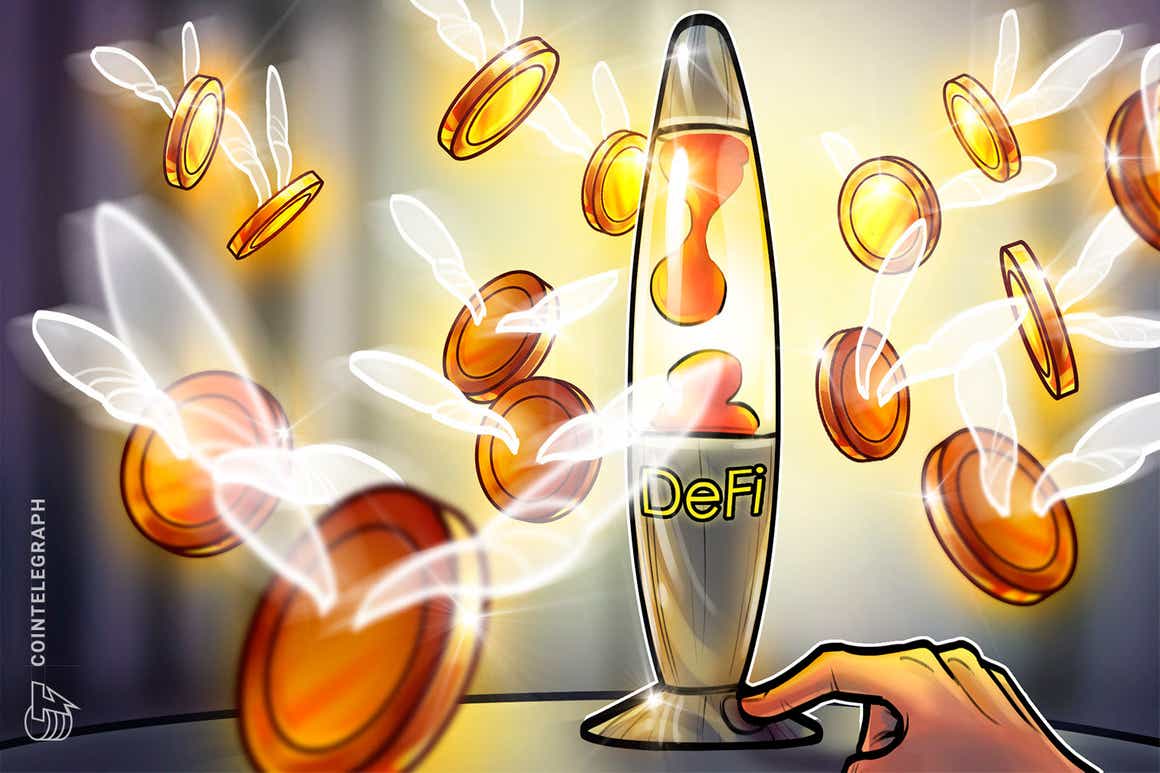Decentralized finance (DeFi) is shaping up to be one of the most important sectors within the blockchain industry. In just the last two years, DeFi’s total value locked (TVL) the total value of assets locked into various DeFi platforms has steadily increased from $21 billion at the start of the year to over $100 billion today.
DeFi represents a wide range of financial products and services, including the all too popular decentralized exchanges (DEX). Despite the explosive growth of DeFi’s lending and borrowing products, insurance and even decentralized derivatives trading, however, regulation on a global scale still appears to be distant.
Through DeFi, blockchain technology is redesigning the world’s financial systems, constructing markets that, ideally, will be more secure, transparent and accessible. Financial innovation is quite intuitively profitable, yet the most deep-pocketed institutions are still hesitant to enter the space due to the lack of regulations, and this could play a crucial part in its adoption.
Some believe compliance is the only way forward, and that while regulation could lead to the centralization of certain aspects of DeFi, the projects which comply will survive in the long term. Others claim DeFi should regulate itself and that the community must come to an understanding of what’s best for its future. Regardless, there will always be unregulated platforms that evade inspection from authorities, but whether large-scale self-regulation would actually be healthy for the industry has yet to be determined.
Despite the large number of mid-cap funds seeing extreme gains from investing in digital assets, larger hedge funds aren’t willing to take on the risk. This is partly due to the harsh scrutiny under which more prominent players are monitored for regulatory compliance, and this could also explain why some of the largest institutions have yet to touch the asset class.
Ruling out the unruly
The main problem with applying traditional regulatory frameworks to decentralized finance is that they were designed with different goals in mind. Traditional finance favors stability, investor protections, enforcing compliance and, above all, centralization. DeFi functions on a system of encouraging cooperation between distributed participants through the removal of economic incentives and, without any centralized intermediaries to blame, traditional frameworks don’t translate well into decentralized assets.
Over the last few years, the effects of regulation on the cryptocurrency sector have been evident, providing a sense of certainty to private investors, boosting the amount of capital entering digital asset markets while supporting innovation and curbing fraudulent and illicit behavior. This could hold for DeFi as well, and though not everyone is entirely convinced, familiarity and education can be great drivers of adoption.
A former law enforcement official at the United States Department of Homeland Security’s Illicit Finance and Proceeds of Crime unit and chief operating officer of Huobi Nevada, Robert Whitaker, told Cointelegraph:
There will always be illegal sites that operate quietly in the background. The DeFi platforms that want to be regulated and believe regulation is the path to a strong viable alternative to traditional banking or finance will survive and, in my opinion, do very well.
Once the necessary infrastructure is crafted to meet the requirements of larger institutions, investments into decentralized finance could even become a lot more experimental to accelerate innovation. This year alone, several financial services giants have made considerable strides within the blockchain sphere.
JPMorgan is said to be developing a proprietary blockchain with its own token to facilitate instantaneous transfers for its clients. Further, after making plans to move over a third of its eligible assets to a blockchain-based custody platform, HSBC announced this year that they would support central bank digital currencies (CBDCs) through regulation. Morgan Stanley also recently announced that it would offer its clients exposure to digital assets.
From BNY Mellon confirming its support for digital asset custody to BlackRock’s disclosure of its stealthy interactions studying the asset class, adoption is certainly on the rise. The question is: Can regulation keep up?
Innovative regulation to regulate innovation
Recently, leading blockchain technology solutions firm ConsenSys received over $65 million in funding from global financial services leaders like UBS, JPMorgan and Mastercard, which could provide them with better insight into the kinds of applications being built on Web 3.0.
According to reports from PWC, nearly 50% of traditional hedge fund managers are looking into making cryptocurrency investments. While these firms will likely lead the way to adoption, this might not happen until the required regulatory infrastructure is built into the DeFi ecosystem.
Despite the countless warnings from reserve banks worldwide regarding the security, scalability and money laundering risks posed by digital assets, most of them agree on its potential to radically improve financial systems. However, the U.S. Securities and Exchange Commission (SEC) believes that DeFi severely lacks investor protections and has requested setting up additional authorities to prevent DeFi products and platforms from slipping through cracks in regulation.
The last year has been peppered with news of international corporations and national regulatory bodies inching toward a better understanding of blockchain technology. In September 2020, the European Commission proposed a framework to improve consumer protections and establish more explicit conduct for players in the cryptocurrency industry, including introducing new licensing requirements.
Later in March, global terrorist financing and money laundering watchdog, the Financial Action Task Force (FATF), announced that it would be updating its guidance regarding a risk-based approach to digital assets and companies dealing in virtual assets. In July, Japan’s Financial Services Agency (FSA) emphasized the importance of regulatory rules for decentralized finance.
Back in February, SEC Commissioner Hester Pierce said that regulators would need to provide the DeFi space with both legal clarity and the freedom to experiment so it could compete toe-to-toe with centralized alternatives. However, the SEC has also reportedly taken action against certain entities associated with decentralized finance applications.
For instance, reports suggest that the regulator has opened an investigation into the lead developer behind the world’s largest decentralized exchange, Uniswap Labs, primarily focusing on how investors utilize the platform and its marketing. Additionally, SEC Chairman Gary Gensler recently made some harsh comments about the DeFi industry, claiming only a tiny number of DeFi tokens weren’t securities.
Though self-regulation may seem ideal to some, intervention from governments and financial authorities might just be an inevitability.
Bending principles
The main challenge for regulators will be in assuring private players and mitigating investor risks. If legislation can somehow do this while ensuring DeFi platforms adhere to Anti-Money Laundering protocols, regulation could promote adoption and produce incredible growth for the space in a risk-controlled manner.
Still, regulating DeFi by force may not be the best way to go about it. Traditional regulations apply to transactions being made between people and applying those standards to human-written code, i.e., smart contracts, is a mind-numbingly complicated task. However, standards could be created through encoded principles.
This would involve setting capital limits and creating risk control frameworks for the industry’s private actors. But, since this goes against the primary ethos of decentralized finance decentralization it will require a proactive and cooperative approach from the DeFi space and an innovation-first mindset from regulators.



